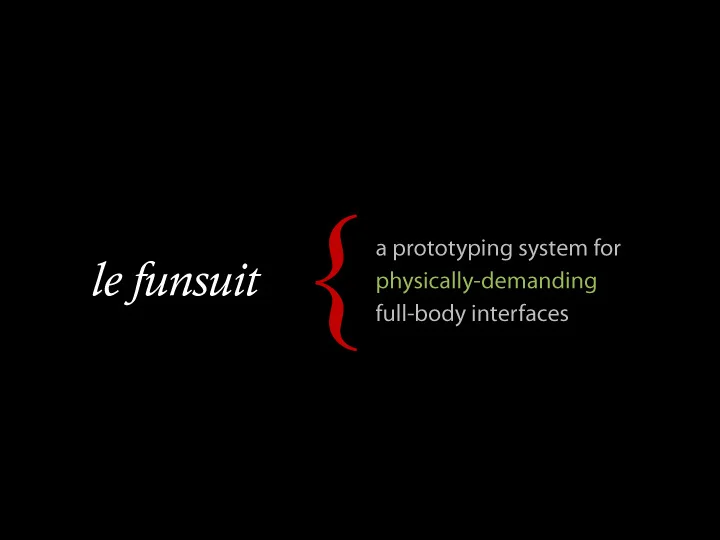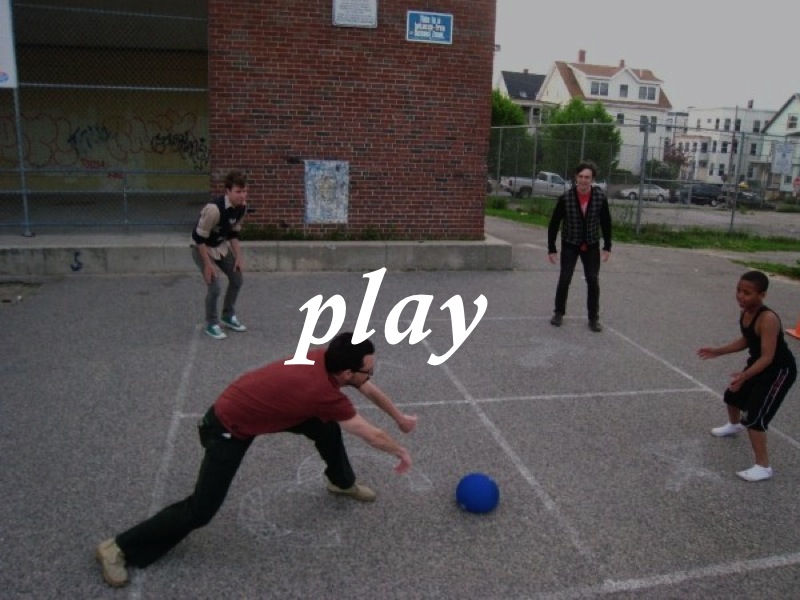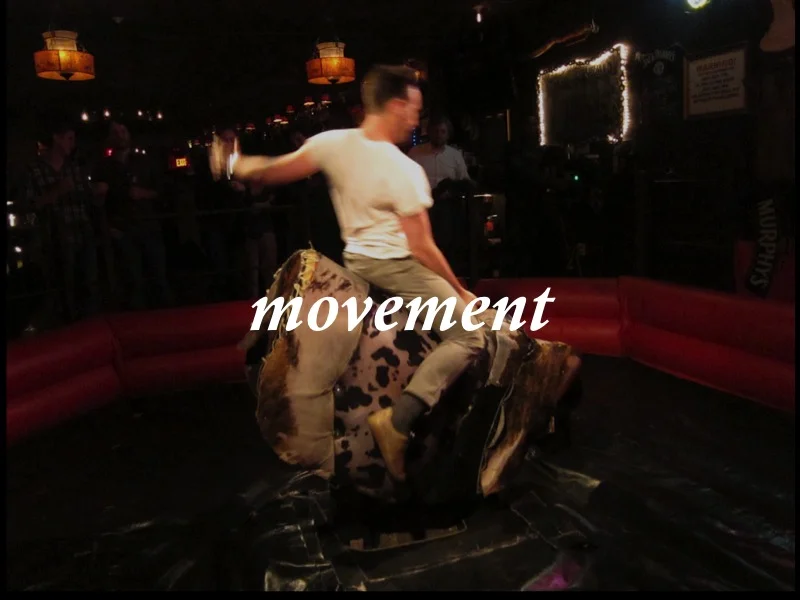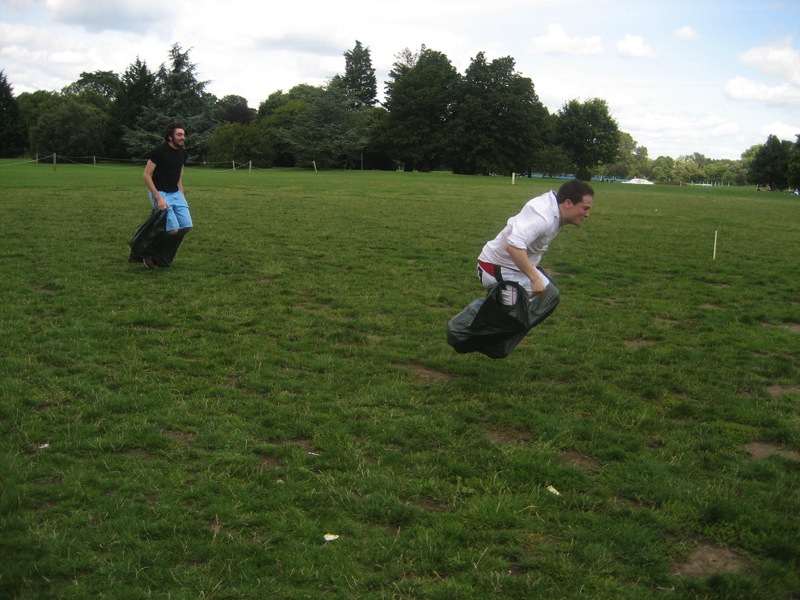movement Prototyping system
An extremely flexible prototyping platform for full-body interfaces
Full-body interfaces are extremely exciting and compelling, but there's a reason they've remained on the fringe of popularity -- getting the correct balance of hardware, software, and movement is extremely difficult.
WHAT IT IS
Le Funsuit is an extremely flexible prototyping platform for full-body interfaces. It simplifies the process of deciding what movements are appropriate for a given application by making easy to attach different kinds of sensors to your body, to reconfigure those sensors, and use those sensors to interface with and control programs on a nearby computer.
Le Funsuit can be used for both hardware and computer-vision applications; it can accommodate both digital and analog inputs, either single or multiple.
“think ‘Twister to control Tetris’”
CHALLENGE
Developing physical interfaces requires either custom hardware or complex computer-vision algorithms, each of which has challenges: custom hardware solution are often expensive and time-consuming to implement; computer vision solutions can require very specific environmental conditions to function properly.
With development overhead so high, there needs to be an easy way to test and prototype the movements themselves without delving too far into the code itself.
This is important because, despite what we might imagine, our everyday interactions with the physical world are not intuitive -- they are shaped by previous interactions. Simply because the movement feels "right" now doesn't mean it is the only or best solution to the problem. However, the high cost of development limits how much we can explore the range of less "intuitive" movements that might work for specific actions.
HOW IT WORKS
The prototyping platform has three parts: the suit, the sensor units, and the control unit.
The full-bodied suit is covered with large sections of Velcro, allowing sensors to quickly be added or removed for maximum prototyping flexibility. Lengths of wire with 1/8" jacks run from the control unit inside the suit along the arms and legs, allowing the sensor units to be plugged, unplugged, and switched out at will.
The accompanying sensor units, each secured and backed with velcro, include a broad range of both analog and digital sensing devices. Each sensor has been pre-wired into a 1/8" jack, used to connect it to the suit's control unit.
The control unit consists of a protective enclosure, a series of 1/8" connectors, and a keyboard emulator. The keyboard emulator interfaces with a computer, allowing each sensor input to be mapped to any desired keystroke, macro, or joystick action.
Watch this 20 min presentation demonstrating the prototype suit's functionality.
RESULTS
One of the most compelling usages for this system is creating customized games or game controllers for occupational and physical therapy. Using a system like this, a physical therapist could map therapeutic movements to game controls, making painful physical therapy slightly more fun.
A related use-case is for exercise gaming. Even if the movements are not therapeutic in nature, you could create a series of exercises that also control something onscreen -- imagine the arm strength of a hard-core gamer who starts controlling a first-person shooter with arm exercises.
My personal favorite is creating social game controllers that require the user to move their body in absurd ways to control a simple game -- think "Twister to control Tetris".












